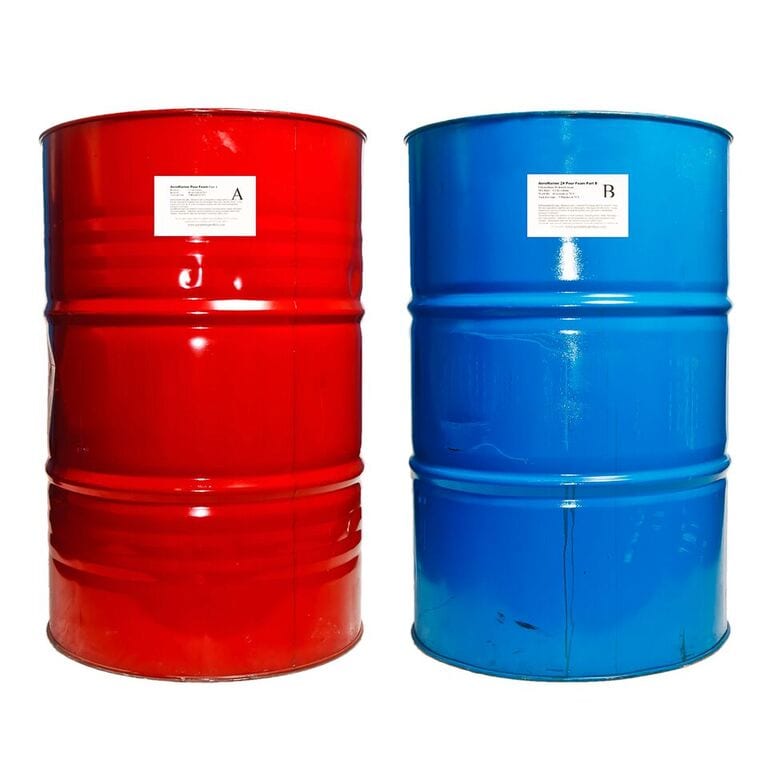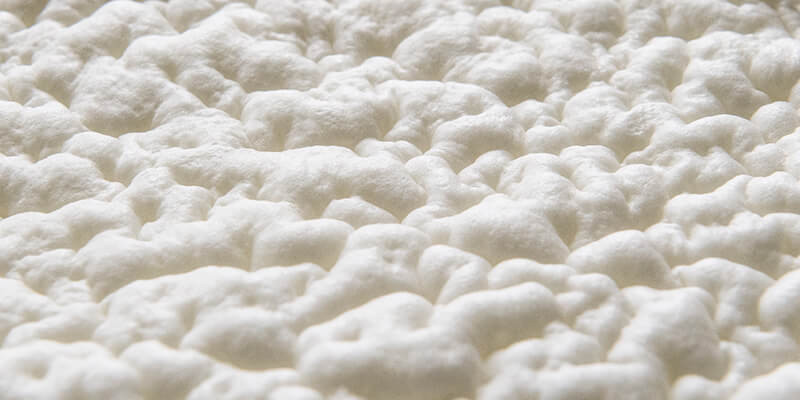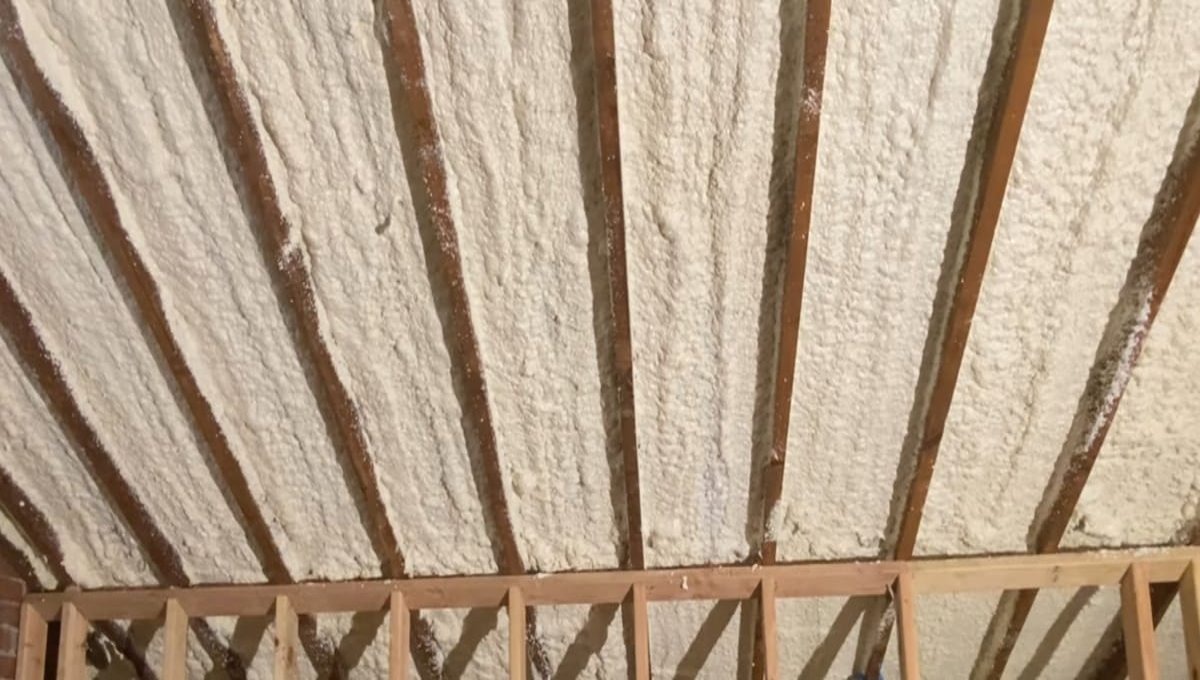When you first heard about spray foam insulation, it might have seemed like a good idea for your home. However, after some research, you may have come across stories of off-gassing, toxic chemicals, and personal concerns about the safety of the product. These worries are valid, especially when thinking about health issues like breathing problems, skin irritation, or even long-term exposure risks. Many homeowners wonder why they would want to invest in something that might feel unsafe, leaving them to regret their decision.
The truth is, spray foam insulation can be safe and effective if installed correctly. The chemical reaction that creates the foam must be carefully controlled by a qualified professional with the right equipment and expertise. Proper ventilation during and after installation is also key to reducing fumes and ensuring good air quality in your house. By working with trained professionals, following manufacturer guidelines, and addressing potential toxicity, you can safely enjoy the benefits of spray foam insulation for your home.
Understanding Spray Foam Insulation
Spray foam insulation is a popular choice among homeowners and contractors due to its versatile nature and effective benefits. Made from a unique blend of chemicals, this material provides excellent thermal performance and air sealing, making it a preferred option for insulating walls, attics, and roofs. However, if you’re installing spray foam insulation yourself, it’s crucial to follow safety rules or hire professionals to ensure the job is done correctly. The process demands special gear, trained pros, and strict adherence to installation guidelines to protect both installers and homeowners.
What Is Spray Foam Insulation Made Of?
Spray foam insulation, often referred to as SPF (Spray Polyurethane Foam), is made by combining two chemical components: the A-side and B-side, typically supplied in 55-gallon drums by manufacturers. The A-side contains isocyanate, a byproduct of refining petroleum used in everyday items like memory foam mattresses and car seats. The B-side is a polyol blend, an organic compound formed from hydroxyl groups bonded to hydrogen and oxygen atoms. When these chemicals mix, they undergo a chemical reaction, transforming into polyurethane plastic, which expands and hardens to create an airtight seal. Proper knowledge and handling are critical for safe and effective application.

How Do A-Side and B-Side Create Spray Foam Insulation?
Spray foam insulation is made by combining two key components: the A-side and B-side, both stored in buckets of liquid chemicals. These chemicals undergo a chemical reaction when they are pressurized, heated to a specific temperature, and sprayed. The heat and high pressure cause the liquids to atomize as they leave the spray gun, turning into tiny, uniform particles. This ensures the chemicals mix effectively and react to form a plastic foam that expands and sticks in place.
Once the foam has cured, it becomes safe and stable. When properly installed, the finished product is safe to touch, breathe near, and even cut into pieces if needed. This process ensures the insulation is both effective and secure for use in homes.
Benefits of Spray Foam Insulation
Spray foam insulation offers many advantages for homeowners, making it a popular choice for modern insulation needs.
- High R-value: Spray foam insulation provides a higher thermal performance compared to old insulation methods, making it more efficient for maintaining comfortable indoor temperatures.
- Air sealing: It expands and hardens, filling gaps and cracks, which reduces air leaks and improves overall energy efficiency.
- Moisture control: Spray foam stops moisture buildup, helping to lower the risks of mold and mildew, which can damage your home and affect air quality.
- Durability: When installed right, spray foam can last for decades, offering a long-term solution for saving energy and money.
Is Spray Foam Toxic After It Dries?
Spray foam insulation is a popular choice for its ability to seal air leaks and improve energy efficiency, but many homeowners and contractors are concerned about its toxicity after it dries. The foam contains isocyanates and volatile organic compounds (VOCs), which can raise worries about off-gassing and long-term health risks. The curing process, which may take weeks, plays a crucial role in determining safety. During this time, the foam stops emitting harmful chemicals, reducing the potential dangers. Understanding the curing timeline and ensuring proper installation are key to keeping your home safe.

The level of toxicity varies depending on the stage of the curing process. Initially, there is a high risk of exposure to toxic fumes, but over time, as the foam cures fully, the risks decrease significantly. Following manufacturer advice, ensuring proper ventilation, and taking precautions can greatly lessen health risks for everyone involved.
| Curing Time | Potential Toxicity Concerns |
| Immediately after application |
Highest risk of exposure to off-gassing and toxic fumes |
| Several days to weeks | Reduced chemical emissions, but still some exposure to particles |
| Fully cured | Minimal off-gassing; significantly lower risks, but careful installation is key |
Taking smart steps like ventilating the area and hiring trained professionals helps ensure that spray foam insulation is both safe and effective in your home.
Potential Hazards of Spray Foam Insulation
Spray foam insulation is a popular choice for sealing air leaks and improving energy efficiency, but concerns about its toxicity after application worry homeowners and builders. The foam can release harmful gases and chemicals during and after the curing process, affecting indoor air quality and potentially harming health. This process, known as off-gassing, involves the release of volatile organic compounds (VOCs), such as formaldehyde and acetone, which can cause breathing problems and other health issues.
Off-Gassing and Volatile Organic Compounds
The length of time these chemicals are released depends on factors like the foam type, how it is applied, and the environment. Following the manufacturer’s guidelines and ensuring good ventilation can significantly reduce these risks, keeping indoor spaces safe.
| Compound |
Average Concentration (mg/m³) |
Potential Health Effects |
| Formaldehyde | 0.02 – 0.50 |
Eye, nose, and throat irritation; respiratory issues; cancer risk |
| Acetone |
0.05 – 0.30 |
Dizziness, headaches, nausea, skin irritation |
| Toluene | 0.01 – 0.10 | Neurological effects, developmental issues, organ damage |
By being aware of off-gassing risks and the impact of VOCs, homeowners can take smart steps like hiring trained professionals, ensuring proper ventilation, and monitoring air quality after installation. These actions help reduce health concerns and maximize the safety of spray foam insulation.
What Is Off-Gassing?
Off-gassing is a byproduct of the chemical reaction that creates spray foam insulation. It is a common phenomenon, similar to the new car smell or shoe smell many of us recognize. For safety, manufacturers recommend airing out items like memory foam mattresses in a garage for a day before use. With spray foam insulation, it is critical to avoid inhaling fumes during and immediately after application. Contractors use suits and respirators to stay safe while they spray, and building occupants, including pets, must vacate the home. Proper ventilation directs harmful fumes outside, ensuring safety during the curing process, which typically takes twelve to twenty-four hours.
Continuous Off-Gassing
The risk of continuous off-gassing is one of the most alarming warnings about spray foam insulation. There are devastating stories of families abandoning their homes due to ongoing health concerns from lingering fumes. This issue arises when the foam is not installed correctly, particularly if the necessary 1:1 ratio of chemicals was not achieved. Proper application by trained professionals is essential to prevent these long-term issues and ensure the insulation is both effective and safe.
Health Risks Associated with Spray Foam Insulation
Spray foam insulation is widely used in homes due to its efficiency, but it comes with health risks. During and after installation, it can release chemicals and gases that may harm the lungs and irritate the skin. Exposure to these harmful substances in the air can cause coughing, wheezing, and trouble breathing. Touching the foam may lead to rashes, itching, or even chemical burns. Over time, the insulation may continue releasing gases, causing long-term effects for people with sensitivities or respiratory problems.
Reducing these risks requires proper installation, ensuring good ventilation, and following the maker’s advice. These steps can help minimize exposure to off-gassing chemicals, keeping the home environment safe for everyone.
| Health Concern | Potential Symptoms |
|
Respiratory Issues |
Coughing, wheezing, difficulty breathing |
| Skin Irritation |
Rashes, itching, chemical burns |
| Long-Term Effects |
Ongoing exposure to off-gassing chemicals |
Taking key steps like working with trained professionals and maintaining proper ventilation ensures that spray foam insulation is installed safely and effectively.
Mitigating Risks: Proper Installation and Ventilation
Ensuring spray foam insulation is safe involves proper installation and good ventilation. The material itself can be highly effective, but how it’s installed and ventilated makes a big difference. Working with certified pros who follow safety rules is key to keeping your home healthy. A well-ventilated area helps ensure the foam cures correctly and reduces exposure to harmful fumes.
Why Professional Installers Are Essential
Experienced installers know how to apply spray foam insulation safely and ensure the air stays fresh during the process. They take the necessary steps to minimize risks and follow the manufacturer’s guidelines for effective results.
Ventilation: The Key to Safer Insulation
Maintaining good airflow is critical when installing spray foam. This involves using fans, opening windows, and ensuring air moves well throughout the area. Homeowners should coordinate with their installers to keep the space aired out for several hours or even days after the job is done. This allows the foam to cure fully and eliminates lingering smells while protecting your family’s health.
Taking these precautions ensures that spray foam insulation is both effective and safe, providing a healthier living environment.
Long-Term Impacts of Spray Foam Insulation
Spray foam insulation offers energy efficiency benefits like lower heating and cooling costs, making it attractive to homeowners seeking efficient solutions. However, its long-term effects raise concerns about health and the environment. Over time, the foam may release volatile organic compounds (VOCs) and other harmful emissions, potentially affecting indoor air quality and causing breathing issues, skin irritation, or even hormonal problems. These risks tend to worsen as the foam gets older, highlighting the importance of proper installation and regular upkeep.
The environmental impact of spray foam insulation is also a growing focus. From its manufacturing process to disposal, the production contributes to greenhouse gases and consumes natural resources. This makes people question whether it is a truly sustainable choice. Exploring non-toxic options can be a smart decision for those who value their health and the planet. More research and clear information about the risks and how to avoid them are essential for homeowners to make informed choices.
Spray Foam Insulation Safety for Residential Applications
Spray foam insulation is a smart choice for increasing energy efficiency, but ensuring safety in residential applications requires proper planning. For homeowners and contractors, understanding potential risks and taking the right steps can help maintain indoor air quality and create a safe living space. Working with skilled installers who adhere to safety guidelines and follow the maker’s instructions is key to minimizing exposure to toxicity levels and harmful chemicals during the installation process.
Indoor Air Quality Considerations
Managing indoor air quality is essential for reducing emissions and preventing health issues like breathing problems. Proper ventilation during and after installation helps clear the air of any harmful chemicals released, ensuring a safe environment. Hiring professionals and using the correct methods for residential applications are crucial steps. Regularly checking air quality after installation ensures that the spray foam insulation provides its full benefits—enhancing energy efficiency and keeping your home comfortable and safe.
Safer Insulation Alternatives for a Healthier Home
Homeowners concerned about the potential dangers of traditional spray foam insulation have many non-toxic and safer options to consider. These choices are not only effective for keeping homes energy-efficient but also better for the health of families and the environment. Cellulose insulation, for example, is made from recycled paper, making it a natural choice. With added fire-retardant additives, it offers both safety and reliability for your home.
Exploring Sustainable Options
Fiberglass insulation has improved significantly over the years. While it had issues in the past, today’s fiberglass is safer and more eco-friendly, with lower levels of formaldehyde and other harmful chemicals. For those who prefer renewable materials, sheep’s wool insulation provides a natural, non-toxic option that excels in managing temperature and humidity. Additionally, new alternatives like soy-based and plant-based insulation mimic the benefits of traditional spray foam but are much safer and more sustainable. By checking these options, families can make wise choices that prioritize thermal efficiency, moisture resistance, and fire safety.
Ensuring Safe and Responsible Use of Spray Foam Insulation
Responsible use of spray foam insulation is essential to ensure it is both safe and effective. Proper installation starts with following manufacturer guidelines at every step, ensuring the material works as intended without causing harm. By adhering to the recommended practices, homeowners and contractors can reduce risks and enjoy the benefits of energy efficiency and cleaner indoor air.
Key Guidelines for Safe Application
- Carefully review all safety precautions and ensure proper use of personal protective equipment (PPE) during installation.
- Understand and follow the correct mixing ratios and application methods to avoid harmful toxicity and release of volatile organic compounds (VOCs).
- Ensure good ventilation and airflow during and after the installation process to reduce exposure to any potential fumes.
- Dispose of all used materials and waste according to local regulations to minimize environmental impact.
- Always stick to the manufacturer’s instructions to reduce risks and achieve optimal energy use and a safer indoor environment.
Final Thoughts
Spray foam insulation offers real benefits like better energy use, sealing air leaks, and making homes more comfortable, but its potential toxicity during drying is a complex issue. To ensure it is safe, it is crucial to understand its composition, follow proper application processes, and adhere to the manufacturer’s advice. Both homeowners and contractors should prioritize safety by using non-toxic options when necessary and ensuring proper application processes are followed. Relying on trained professionals for spray foam installation is the best way to reduce risks and create a healthier living space.
Looking for trusted spray foam insulation experts? Contact us today, and we’ll connect you with qualified professionals who can ensure a safe, efficient installation, giving you peace of mind and lasting comfort in your home. Don’t take chances with your home’s safety — let the pros handle it!
FAQ
How long after spray foam is it safe?
It is recommended to stay out of your house for 24-72 hours after applying spray foam insulation. This allows the foam to cure and off-gas volatile organic compounds (VOCs), ensuring a safe environment for your family to return inside.
Is spray foam safe once dry?
Spray foam insulation is generally considered non-toxic after it dries, making it safe for use in most homes.
Is Expanding Foam Safe When Cured?
Yes, expanding foam is safe once it has cured. To ensure the best results, you can carve the cured spray foam slightly for better adhesion, but it’s generally fine as is.
How Long Does It Take to Remove Spray Foam Insulation?
Spray foam removal can vary in length based on several factors, but most removals are completed within a day.

